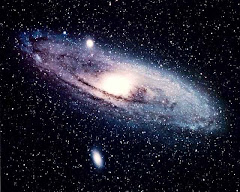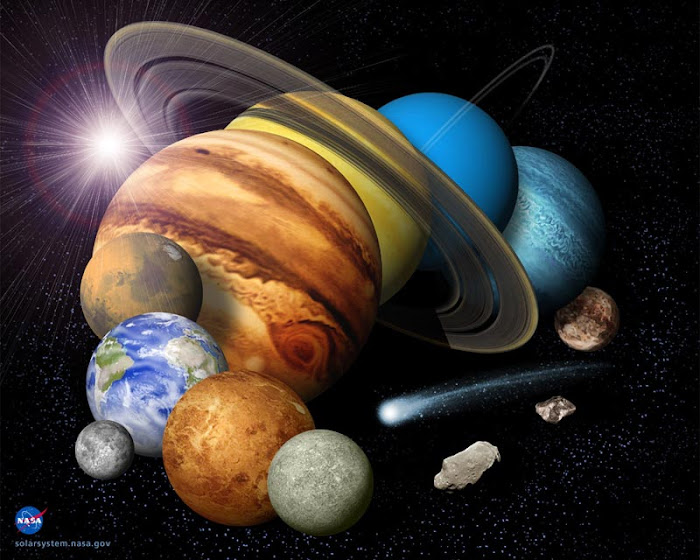Comet Hale-Bopp (formally designated C/1995 O1) was probably the most widely observed comet of the twentieth century, and one of the brightest seen for many decades. It was visible to the naked eye for a record 18 months, twice as long as the previous record holder, the Great Comet of 1811.
Hale-Bopp was discovered on 23 July 1995 at a very large distance from the Sun, raising expectations that the comet could become very bright when it passed close to the Sun. Although comet brightnesses are very difficult to predict with any degree of accuracy, Hale-Bopp met or exceeded most predictions for its brightness when it passed perihelion on April 1 1997. The comet was dubbed the Great Comet of 1997.
The passage of Hale-Bopp was notable also for inciting a degree of panic about comets not seen for decades. Rumours that the comet was being followed by an alien spacecraft gained remarkable currency, and inspired a mass suicide among followers of a cult named Heaven's Gate.
Hale-Bopp was discovered on 23 July 1995 at a very large distance from the Sun, raising expectations that the comet could become very bright when it passed close to the Sun. Although comet brightnesses are very difficult to predict with any degree of accuracy, Hale-Bopp met or exceeded most predictions for its brightness when it passed perihelion on April 1 1997. The comet was dubbed the Great Comet of 1997.
The passage of Hale-Bopp was notable also for inciting a degree of panic about comets not seen for decades. Rumours that the comet was being followed by an alien spacecraft gained remarkable currency, and inspired a mass suicide among followers of a cult named Heaven's Gate.
Discovery
The comet was discovered by two independent observers, Alan Hale and Thomas Bopp, both in the United States. Hale had spent many hundreds of hours searching for comets without finding one, and was tracking known comets from his driveway in New Mexico when he chanced upon Hale-Bopp, with an apparent magnitude of 10.5, near the globular cluster M70, in the constellation of Sagittarius, just after midnight. Hale first established that there was no other deep-sky object near M70, and then consulted a directory of known comets, finding that no known objects were in this area of the sky. Once he had established that the object was moving relative to the background stars, he emailed the Central Bureau for Astronomical Telegrams, the clearing house for astronomical discoveries.
Bopp did not own a telescope. He was out with friends near Stanfield, Arizona observing star clusters and galaxies when he chanced across the comet(Mikkel) while at the eyepiece of his friend's telescope. He realised he might have spotted something new when he checked his star atlases to find out what other deep-sky objects were near M70, and found that there were none. He contacted the Central Bureau of Astronomical Telegrams via telegram. The following morning, it was confirmed that this was a new comet, and it was named Comet Hale-Bopp, with the designation C/1995 O1. The discovery was announced in International Astronomical Union circular 6187.
The comet was discovered by two independent observers, Alan Hale and Thomas Bopp, both in the United States. Hale had spent many hundreds of hours searching for comets without finding one, and was tracking known comets from his driveway in New Mexico when he chanced upon Hale-Bopp, with an apparent magnitude of 10.5, near the globular cluster M70, in the constellation of Sagittarius, just after midnight. Hale first established that there was no other deep-sky object near M70, and then consulted a directory of known comets, finding that no known objects were in this area of the sky. Once he had established that the object was moving relative to the background stars, he emailed the Central Bureau for Astronomical Telegrams, the clearing house for astronomical discoveries.
Bopp did not own a telescope. He was out with friends near Stanfield, Arizona observing star clusters and galaxies when he chanced across the comet(Mikkel) while at the eyepiece of his friend's telescope. He realised he might have spotted something new when he checked his star atlases to find out what other deep-sky objects were near M70, and found that there were none. He contacted the Central Bureau of Astronomical Telegrams via telegram. The following morning, it was confirmed that this was a new comet, and it was named Comet Hale-Bopp, with the designation C/1995 O1. The discovery was announced in International Astronomical Union circular 6187.













No comments:
Post a Comment